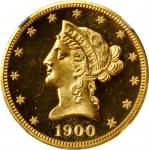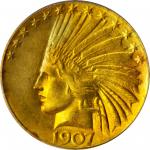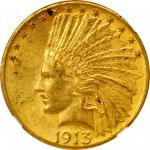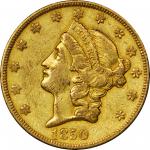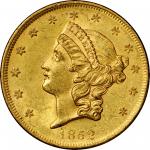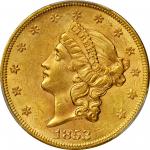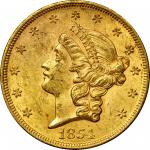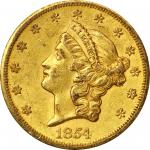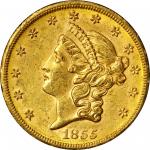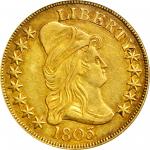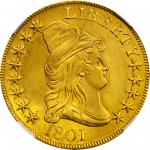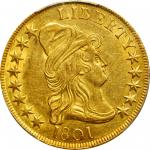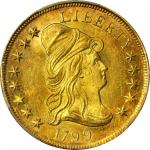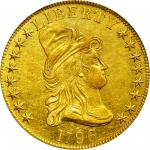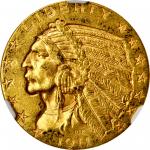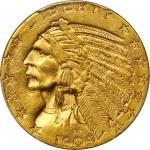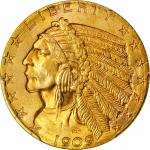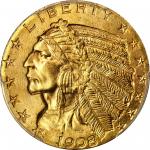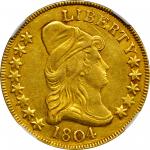1804 Capped Bust Right Eagle. BD-1, Taraszka-31. Rarity-4+. Crosslet 4. AU Details--Improperly Cleaned (NGC).,A more affordable example of this prized early eagle, the final variety in the regular issue Capped Bust Right series. Both sides are nicely centered within fully and uniformly denticulated borders. Color is predominantly deep gold, although we do note more vivid outlines of reddish-rose iridescence to many of the devices. The impression is a bit soft overall, typical of the issue, but all major design elements are clear to allow full appreciation of the design. The NGC qualifier concerns wispy hairlines and a somewhat glossy texture to the surfaces. BD Die State b/b.<p>The $10 eagle was from the outset intended to be the flagship coin of the new nation. Congress mandated that gold coins were to be struck at a 15 to 1 gold to silver ratio, which would prove to be the eventual undoing for the early $10 gold pieces. The economic situation in Europe towards the end of the eighteenth century and the first years of the nineteenth century was in a period of severe turmoil. The French Revolution and the beginning of the Napoleonic Wars drastically increased the price of gold especially in relation to plentiful silver coming from the South American mints largely in the form of 8 reales coins. By the time the eagles were introduced into circulation, gold was worth around $15.50 in silver to $1 in gold, making it an appealing prospect for speculation. Almost from the outset, commodity brokers bought up as much of the cheaper American gold coins at their face value and sold them on the European bullion market for a significant margin above face value. So much of the early United States gold coins ended up being sold in this fashion that it is estimated that by the end of the Napoleonic Wars, some 98% of all the gold coins struck at Philadelphia up to then ended up in the brokers crucibles. To make things worse, the silver dollar suffered a similar fate, as it contained more silver than their legal tender equivalents, the Spanish American 8 reales coins. Mint Director Elias Boudinot protested that until this situation could be rectified, continued production of both the eagle and the silver dollar only to have them end up almost immediately in the hands of a bullion speculator was a futile waste of effort and gold. President Thomas Jefferson agreed with this conclusion and in 1804, ordered that production of both denominations to be suspended indefinitely. It would not be until 1838 before production of the eagle would resume.<p>Before production of the eagle was suspended, published mint records indicate a total of 3,757 $10 gold pieces were struck during calendar year 1804, however die analysis tells a more complex story. The 1804-dated eagles were struck from a single pair of dies -- BD-1 -- using an obverse that employed a Crosslet 4 in the date. It should be noted here that the BD-2 "1804" eagles with a Plain 4 were actually struck in 1834 for inclusion in the famed sets from that time and were never intended as circulation issues. The obverse die for the BD-1 die pair began to fail fairly early on in its service life revealing at first a light crack connecting the first four stars to 18 of the date and other cracks around 0. Later, spalling eruptions developed below the B of LIBERTY, between ER, at the right serif of T, and below star 9. The die was later lapped and the lines are visible around the truncation of the bust. On the later die states, the buckling in the obverse field gives evidence of the eventual failure that ended this dies usefulness. The die cracks on the reverse die began to progress, as well, but it was still serviceable. It was mated with an 1803-dated obverse and the remaining eagles struck in 1804 are of the very rare 1803 BD-6 die marriage using the 1804 reverse but in an advanced die state. As is standard for these early mint records, there is no differentiation as to the dates on the coins that were produced. Based on statistical analysis of surviving examples of the 1803 BD-6 and the 1804 BD-1 eagles and the research of experts like John Dannreuther, it is now generally considered that only 2,500 eagles were struck from the 1804-dated obverse die.<p>A small mintage even for eagles, the number of surviving specimens of the 1804 BD-1 is minuscule. It is believed that somewhere between 80 and 100 pieces are currently thought to exist in all grades. This last issue of early eagles seems to have been handled particularly harshly once released into circulation. Those that did not end up sold as bullion and shipped abroad are in low grades and quite often damaged. In his Numismatic Reflections for the MS-60 example in our August 2011 Baltimore Sale, Q. David Bowers observed that:<p><em>"There is a peculiar thing about eagles dated 1804. First of all, they are very elusive, but my main point is that if somehow ten 1804 eagles could be brought together in one space, along with ten of each other date from 1799 to 1803, the average preservation quality or grade of the 1804 would be significantly lower. Why this is I dont know. Quite puzzling."</em><p>Indeed, it is challenging even to locate an appealing circulated example of this issue. The present coin, although not perfect, has a unique charm that will please many buyers in todays market. Given that the 1804 date has long held a special fascination among numismatists, we anticipate keen bidder interest in this offering.,,

